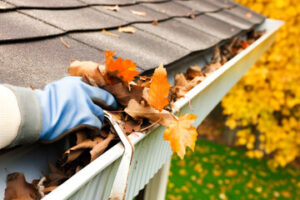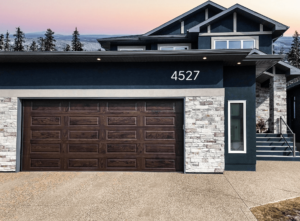Gutter Cleaning Port St Lucie is the process of removing debris like leaves, twigs, and dirt from the gutters of buildings. This helps maintain proper water flow and reduces the risk of clogs and water damage.

It also avoids costly repairs to roofs, walls, and foundations. Gutter maintenance also reduces pest infestations by eliminating standing water and damp areas.
Incorporating gutter cleaning into your home maintenance routine protects your roof, siding, foundation, and other structural elements of your property. It also preserves your home’s value and insurance coverage. Consistently maintaining the function of your gutters prevents water damage, mold growth, and pest infestations. It also averts costly repair and replacement costs.
Gutter inspections assess the condition of your gutter system, verifying their proper functionality and identifying potential problems with their installation. This process begins with a visual examination of the system to look for clogged areas and signs of leaks or disrepair. Inspectors then move to manually remove debris, ensuring that accumulated materials do not impede the flow of rainwater into downspouts and drains.
Clogged gutters cause overflow that can damage your home’s exterior and foundation. This moisture also causes mold and mildew that can deteriorate roofing materials, resulting in a shorter lifespan for your home’s roof and other materials. Gutter inspections allow you to identify and address these issues before they become severe, avoiding costly repairs or even a full roof replacement.
When you schedule a professional gutter cleaning service, they begin by inspecting the physical condition of your gutters to look for cracks, rust, sagging parts, and other signs of wear that may cause leaks or deterioration. They will also check the slope of your gutters and ensure that they are properly aligned with downspouts, as this is important to avert clogs and to enable water flow through the entire gutter system.
Next, your gutter cleaners will flush the system to remove any lingering debris and to test its overall functionality. This involves using a standard garden hose fitted with a spray nozzle to squirt water down the gutters, ensuring that water flows through all sections of the system and down the downspouts. This is an important step in ensuring that your gutters are functioning effectively and mitigating the risk of future blockages. Inspectors will then check the downspouts themselves for any clogs or obstructions that may be difficult to see due to their location on the side of your house.
Manual Removal
Gutter cleaning is typically a manual process that involves climbing a ladder to manually remove debris from the gutter system. This can be a dangerous endeavor, especially for homeowners that are uncomfortable with heights or do not have the proper equipment for safe cleaning. Homeowners should consider hiring a professional gutter cleaning service to avoid the dangers of DIY gutter maintenance.
Clogged gutters can lead to numerous problems, including water damage and pest infestation. If you notice signs of a gutter clog, such as water spilling over the edges or drooping from excess weight, it is likely time to clean your gutters. A regular maintenance schedule, typically twice per year, will ensure that your gutters remain unobstructed and prevent future clogs.
To properly clean your gutters, start with a thorough inspection and assessment of the condition of the system. Observe the location of downspouts and corners, as these areas are commonly prone to blockages. Check for signs of pests, such as ants or mosquitoes, that may be nesting in the gutters. Look for additional issues, such as cracks or holes in the gutters or downspouts that may need to be repaired.
Once you have completed the initial inspection, prepare your cleaning tools and a work area. Obtain a ladder that is stable and secure and ensure it is well-positioned on the ground. Set up a bucket or tarp beneath the ladder to collect the debris you will be scooping up, and wear gloves to protect your hands from sharp debris. A specialized gutter scoop is an excellent tool for removing leaves, twigs, and other debris from the gutters, but a small trowel or garden spade can also be used if necessary.
When you have removed the majority of the debris, use a hose to flush the gutters and ensure that they are free of any remaining dirt. This will help to clear away any pests and debris that may be stuck in the gutters and will also help to ensure proper flow of water. After cleaning the gutters, dispose of any remaining debris and store your tools safely.
Flushing
After removing large twigs and leaves by hand, or with a garden rake or gutter scoop, use the hose to wash away loose debris. The water should be at full force but not so hot that it is damaging to the gutter system. Begin at the lowest end of the gutter and work toward a downspout, observing the flow of water as you go. If you see pooling or leaking, this is an indication of a blockage and must be addressed promptly to prevent structural damage.
Once all the visible debris has been removed, it’s time for a thorough flushing. Professionals may also use a plumber’s snake or auger to break up stubborn clogs in the downspouts. After the flushing, they will check for proper water flow through the entire gutter system. If there are any sagging or gaps, they will repair these as well.
Keeping gutters clean is a critical part of home maintenance. Without regular cleaning and inspection, rainwater can overflow from the eaves and spill over the sides of your house, leading to soil erosion and compromising the foundations. In addition, the stagnant water provides an ideal breeding ground for mildew and mold, which are hazardous to health. If these conditions are left unattended, they can lead to costly repairs.
Gutter maintenance is a manageable DIY project, but if you can’t reach certain areas of your gutters safely or you notice signs of a serious clog or leak, it is in your best interest to call a professional. They can help keep your gutters functioning properly, protect your roof and siding, and maintain the value of your home. They can also perform a fall gutter clean to remove leaves and debris before they freeze, and they can check the gutters for ice dams in winter to prevent structural damage. This will help to ensure that your home is protected for years to come. Contact us today to schedule your appointment! We offer free estimates! We provide professional service and quality work. We are a locally owned and operated business, and we guarantee our work.
Cleaning Tools
Gutters are important for directing rainwater away from roofs, foundations, siding, and landscaping. Clogged gutters can cause expensive water damage and promote mold and pest infestations. Proper gutter cleaning can extend the lifespan of your home’s gutters and reduce maintenance costs. There are a variety of tools available to simplify the process and make it easier for homeowners to do their own maintenance.
A gutter cleaner spray removes dirt, grime, and stains from the outside of your gutters, minimizing the need for hard scrubbing. These cleaning products are safe for most gutters and won’t harm paint finishes. They’re also easy to use, eliminating the need for ladders and increasing safety. A specialized gutter cleaning attachment on a pressure washer is another effective tool that uses forced water to clear away grime and prevent gutter blockages. This is a great option for multistory homes and can be used with caution to avoid gutter damage.
If a clog or debris buildup is too severe, it’s time to try a more advanced gutter cleaning tool. A downspout snake can be used to break up and dislodge obstructed areas of your gutters. This gutter cleaning tool has a long handle with a curved or flat scoop at the end. To use it, simply insert the tool into a downspout and twist, push, or pull to dislodge obstructions.
For an even more effective gutter cleaning tool, a wet/dry vacuum or garden hose with a high-pressure nozzle can be used to flush out the gutters and downspouts. This method is ideal for removing wet leaves and dirt from the gutters, preventing further clogging and maximizing the longevity of your gutters.
Lastly, a telescoping gutter cleaning wand is a tool that helps users reach high gutters without using a ladder. Its extension wand and adjustable length make it easy to adjust to the height of a gutter and is perfect for single or multiple-story homes. Regardless of which gutter cleaning tool you choose, it’s always best to have a spotter standing by to watch for any potential falls and ensure that you’re keeping one foot on the ladder at all times.








